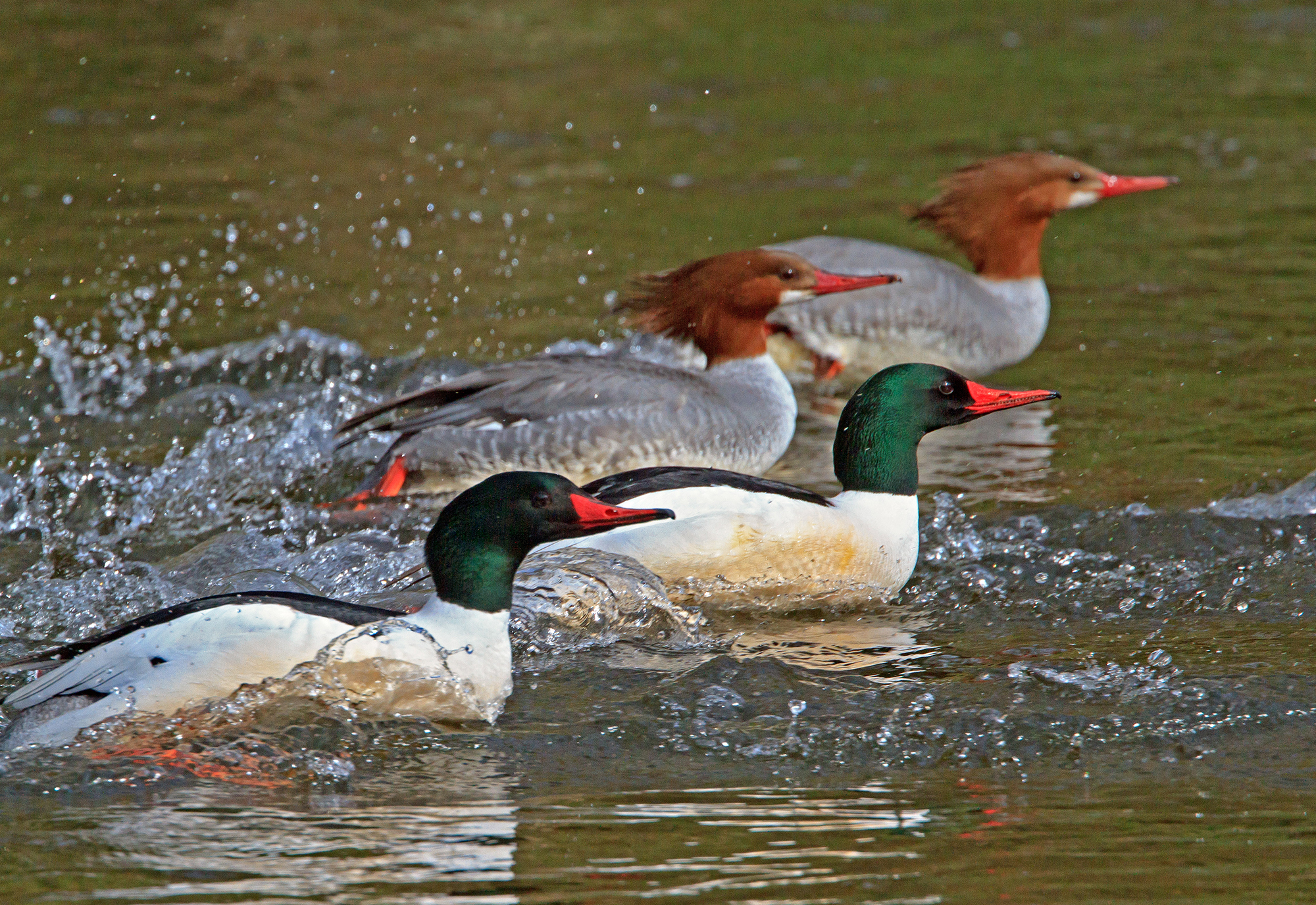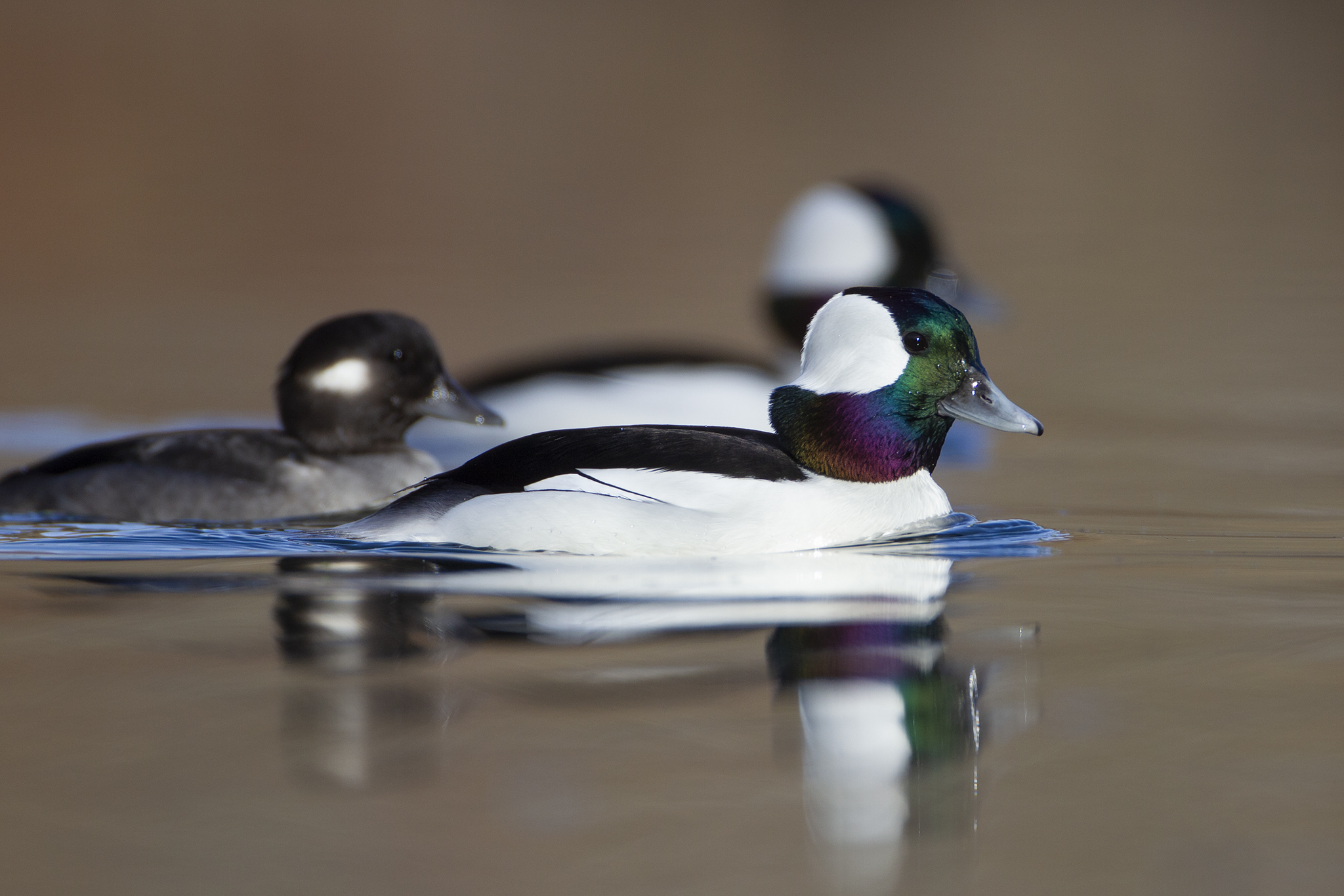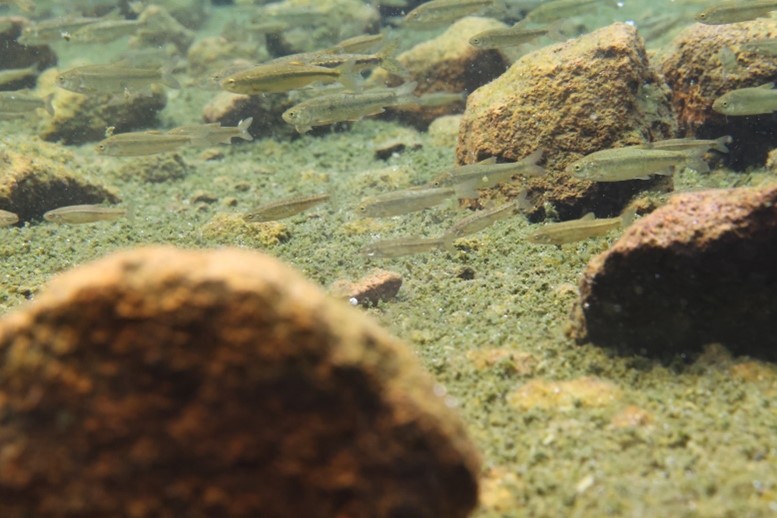Written by David R. Maddison, Director of OSU Arthropod Collection
In 2015, I taught a class called Discovering Insect Species at Oregon State University. The eleven of us (nine students, a graduate teaching assistant, and me) formed a research team studying the diversity of ground beetles of the genus Bembidion. That’s a worldwide genus of little, terrestrial, predatory beetles, with about 130 species in Oregon. We were focusing on one subgenus called Trepanedoris, a group that lives at the edges of marshes. Some of these have little orange dots on them, others are solid dark brown, but all have distinctive heads with a V-shaped groove. We bonded as a research team, and we called ourselves the Trepaneleven.
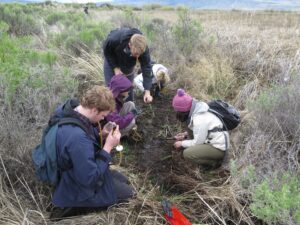
Together we collected beetles, examined them under the microscope, sequenced and analyzed their DNA. To our amazement, we discovered a new species that lives in the marshes of both Klamath Marsh NWR and Malheur NWR. Because the students were there at every step in the research, they realized at the same time I did that we had found a new species no one knew about before. Seeing the joy and excitement on the students faces as they realized they had participated in this discovery will be one of the signature moments in my career as an educator. The “type locality” of that species will be Bridge Creek Canal Pond at Malheur, as the holotype specimen was collected there. (A holotype is the name-bearer – it is as if that specimen is carrying a flag with the name of the species on it.) The species will be named after the class, using the Greek word for “eleven”.
That wasn’t the only discovery made from the field work done in the class. In fact, a total of four new species were collected on our two field trips, but some of those took several years of research to uncover. This was vastly more than I had expected before the research began. And, as it turns out, there may be a fifth new species, known only from Malheur.
On our May 2015 visit, the class found a small, black species of Bembidion (Trepanedoris) around the edges of Marshall Pond. It was quite common there. At the time I thought it was Bembidion acutifrons (and it still might be), but its DNA sequences are distinct, and I started considering the possibility that the Malheur populations represented a distinct and new species. Recently I managed to make preparations of chromosomes of some old specimens we collected around Marshall Pond in 2015, and it appeared as if the Malheur specimens had an unusual chromosome number, having 13 pairs of chromosomes rather than the expected 12. (Remember that humans typically have 23 pairs of chromosomes – that’s why the company is called 23andMe.) I wasn’t fully confident, though, as under the microscope the chromosomes were jammed together and hard to count – the preparation was poor, as the specimens were old. Still, the apparent difference made me think this had a quite good chance of being a new species. However, I needed to two things first: confirm that the Malheur beetles had 13 pairs of chromosomes, and see if I could find and study populations of beetles like Bembidion acutifrons in marshes east of Malheur, especially in Idaho, Nevada, and Utah.
In early May my partner Pam and I headed out to Malheur to collect some more of these “Bembidion acutifrons”, so that I could take them back to the lab and examine their chromosomes. We spent the first night with headlamps on searching the shoreline of Marshall Pond, where the class had found them commonly eight years earlier. Alas, after several hours searching, we only found a single male. The next day we tried various areas in the marsh further south. We did find more specimens of the other new species that will be named after the class, but it took a while for us to finally find a habitat with “Bembidion acutifrons”. We did find them eventually, at Buena Vista Ponds (an area suggested by Alexa Martinez).
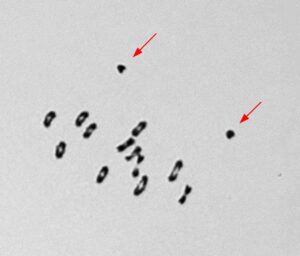

Back in Corvallis a couple of days later, I made the chromosome preparations. This time I knew they would be good, as the specimens were so fresh, and I was excited to confirm that the Malheur beetles had 13 pairs of chromosomes. I peered under the microscope at the microscope slide I made of the chromosomes of the first specimen, and… 12! That was a surprise, and I was confused, as it really looked as if there were more than 12 chromosomes in those earlier preparations. I looked at the next specimen, and… 13! And the next… 14! As I looked through the remaining preparations, it became clear that this was one of those unusual species that has variable number of chromosomes caused by what are called “B-chromosomes”: extra chromosomes that come and go, with any individual having either 0, 1, 2, or more of them. They don’t seem to have much of an effect on the beetle; for the most part B-chromosomes have so-called “junk” DNA in them. It was the B-chromosomes that fooled me; the population at Malheur has the typical 12 pairs of chromosomes, but it also has extra chromosomes that aren’t part of the core genome of the beetles. So, the stronger evidence that the Malheur beetles are a separate species vanished.
The Malheur “Bembidion acutifrons” might still be a separate species, but if so, the additional evidence will not come from chromosome number. Significantly more research is now needed to see what the populations of these beetles elsewhere are like, and to see if the genetic distinctiveness of the Malheur populations are at one end of a gradual transition, or if they are abruptly different from the rest of Bembidion acutifrons. Looks as if there will be more excursions in our future to high desert marshes.


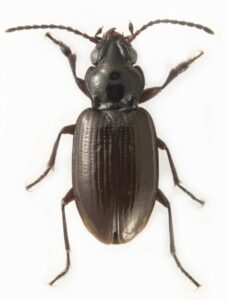



Above, Left to Right:
- The new species of Bembidion discovered by the class.
- A specimen of Bembidion from Marshall Pond at Malheur that might be either Bembidion acutifrons or another new species. This is the species we were seeking on our early May visit.
- Bembidion are quite small. This is Bembidion scenicum from Klamath Marsh, a species that looks more or less identical to what might be another new species at Malheur.
Article’s Feature Image: David collecting Trepanedoris at Buena Vista Ponds, where we finally found the species we sought in number.







